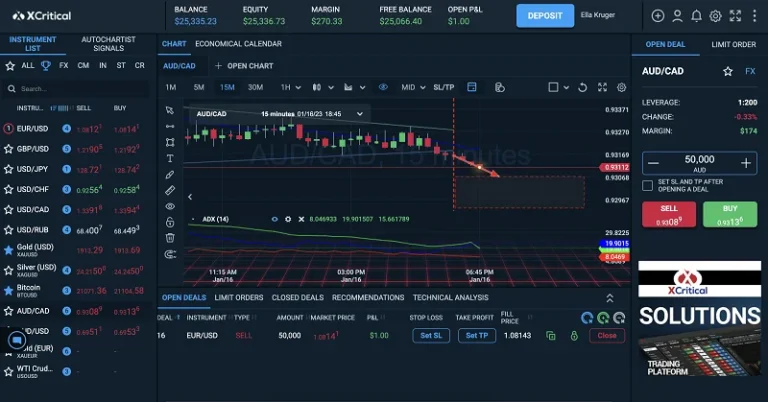Yield Farming Vs Staking Vs Liquidity Mining
Staking, Yield farming, Liquidity mining and Crypto Mining are few examples. If you would possibly be in this space and have noticed it develop over time, you’ll be equally surprised and happy as I am. Users can manage their very own digital identities, choosing what stage of data they want to present to applications. Information sovereignty, where users have the choice to determine whether or not to disclose particular person transaction data.
Be certain to always do your homework as crypto markets can be a rocky landscape especially for much less experienced traders. Tokens can abruptly lose worth due to the volatile nature of the crypto market. However, a risk-tolerant consumer is more inclined in course of investing in Yield Farming or Liquidity Farming it is all the time recommended to endure thorough due diligence earlier than investing. Each time costs of A improve, to be able to steadiness the equation the algorithm should reduce the price of B. In order to maximise their income Yield Farmers leverage completely different DeFi platforms like Uniswap, Compound, Aave. With the evolution of the Cryptocurrency house, builders of Cryptocurrencies try and entice buyers with higher rewarding merchandise.

Vulnerabilities can result in substantial losses, making it crucial to interact with platforms that have undergone rigorous safety audits. Over time, as the platform’s user base and utility grow, the value of these liquidity tokens may rise. It’s this unique blend of gaining early entry and the chance to be part of a project’s growth trajectory that makes liquidity mining an attractive proposition for so much of crypto enthusiasts. The nascent nature of the DeFi area means it typically operates in a regulatory gray area. Altering legislation can significantly impression the viability and profitability of liquidity mining, posing a considerable threat to liquidity suppliers.
Yield farming and staking returns differ, with stakes ranging between 5% and 15% most. On the other hand, the returns on yield farming might surpass 100 percent in some circumstances. Yet, security-wise, yield farming on newer initiatives could lead to complete loss as builders favor so-called rug pull projects. By offering liquidity, yield farmers earn a portion of transaction fees and yield farming rewards distributed by the protocol.
Staking is a complete process in the crypto world involving holding a certain quantity of cryptocurrency in a wallet or trade to support the community. It has gained popularity because of the defi yield farming development potential rewards, which provide a passive income stream by earning additional coins. The rewards vary based on the particular cryptocurrency and the amount staked. Some use Proof of Stake (PoS), requiring validators to stake a sure quantity to validate transactions. In both methods, elements such as impermanent loss, protocol safety, and token volatility are critical concerns. Diversifying across different protocols and continuously monitoring market situations and protocol updates are common practices to handle risk.
With a mission to bridge the divide between traditional finance and decentralised methods, it offers users an unparalleled trading surroundings. Impermanent Loss is a loss that’s suffered by a Liquidity supplier when his assets are beneath a liquidity pool. Yield farming is also appropriate for producing passive income for merchants holding low trading volume tokens, offering the opportunity to earn interest on otherwise idle property.
Finest Yield Farms
It’s been in comparability with farming because it’s a novel method for “growing” your cryptocurrency. Yield farming or liquidity mining includes customers offering liquidity to decentralized exchanges (DEXs) or lending platforms in change for rewards. As a result of their high annual share yield charges (APY) – between 2.5% and 250%- yield farming swimming pools are immensely aggressive. The change in APY rates forces liquidity farmers to switch between platforms constantly.
Yield Farming Vs Staking: What Is The Difference?
A unique facet of liquidity mining is its inherent community-building side. As participants earn governance tokens, they become stakeholders within the project’s future, fostering trust and loyalty. This symbiotic relationship ensures the longevity and vibrancy of the DeFi protocol, cultivating a thriving decentralized ecosystem. It’s a dynamic interaction wherein supplying liquidity feeds into the bigger architecture, making certain seamless transactions and fostering a sturdy platform.

It involves the use of financial devices and rewards such as interest, dividends, or rebates for making deposits and taking out loans to generate substantial returns for traders. Staking and liquidity mining (commonly referred to as yield farming) are two confirmed methods you should positively think about. Overall each staking and yield farming are a good way https://www.xcritical.com/ to generate passive earnings when investing in cryptocurrencies. We have a devoted staking dashboard for our customers where you possibly can monitor your earnings by the day. Your rewards are generated and could be withdrawn or restaked to extend your collateral for elevated potential future returns.

In addition, the underlying applied sciences also present additional indications of variations between staking and the opposite two approaches. The following dialogue provides a detailed clarification of all the three methods in DeFi which might help you earn productive returns on your crypto assets. You can perceive yield farming alongside the other two methods comprehensively for figuring out potential differences between them. In common, liquidity mining is a derivative of yield farming, which is a by-product of staking. The primary goal of staking is to keep the blockchain community safe; yield farming is to generate maximum Blockchain yields, and liquidity mining is to supply liquidity to the DeFi protocols. Staking is relatively easy and easy, because it involves holding your digital belongings in a pockets.
- The allure of DeFi lies significantly in its potential to earn passive income.
- Yield farming also provides a lifeline for these tokens with low buying and selling volume in the open market to be traded comfy.
- Like all funding avenues, it demands understanding, research, and caution.
- Instead, they adopt a diversified method, balancing their participation between yield farming and liquidity mining.
- At its core, liquidity mining involves customers depositing equal quantities of two tokens right into a liquidity pool on a DEX.
These ideas contain clients committing their sources to help blockchains, decentralised exchanges (DEXs), or different decentralised purposes requiring capital. Our solution is designed to offer users with entry to probably the most dependable and up-to-date info on the Ethereum blockchain and digital asset markets. Yield farmers must consider the risk of paying excessive fuel charges when figuring out whether or not to shift property between liquidity pools. Liquidity providers need to identify a liquidity pool that offers good interest rates for offering liquidity. Then, they must determine on a token pair and select a DeFi platform that either presents a customizable liquidity pool or an equilibrium liquidity pool. With the addition of each new block, customers can earn governance tokens and a percentage of the platform’s charges.

